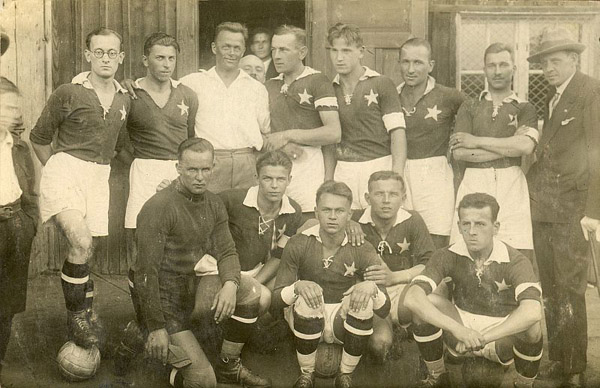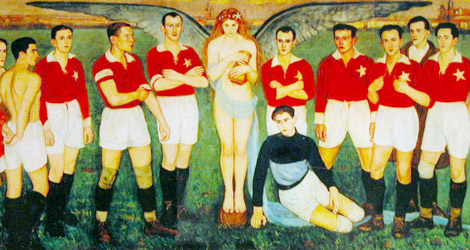The Football Match that Divided Poland
In 1927, the top teams in Central Europe competed in the inaugural Mitropa Cup. A pre-war predecessor of today’s much-hyped Champions League, the competition pitted the elite teams of Budapest, Prague and Vienna against each other in a battle for continental supremacy.
It was Sparta Prague who went on to claim the title, in front of a baying Viennese crowd hurling stones and bottles onto the pitch. The competition itself has been largely forgotten as the European Cup continued its growth and dominance following its creation in 1955. However, it was ferociously contested and enjoyed great popularity at the time. It is all too easy to forget the legacy of inter-war European football.
Meanwhile, in neighbouring Poland, a country reborn following the armistice of 1918, fourteen clubs began to organise a competitive league. Despite having the backing of the clubs, the country’s organising body, the PZPN opposed the idea. Led by Cracovia chairman, Dr Edward Cetnarowski, the proposed league format was rejected and so Cracovia, among the country’s best and most influential teams at the time, did not compete in the 1927 championship.
Cracovia had, in 1921, become the first champions of Poland in a much more streamlined competition played out in the midst of war and border strife, as well as touring Spain in 1923 and playing against Barcelona and Real Madrid. Whatever their previous successes, the 1927 championship would offer clubs the first opportunity to earn the right to call themselves the true national champions.
 The 1927 Wisła Krakow team
The 1927 Wisła Krakow team
A quick glance at the list of founding clubs makes for sobering reading – the presence of three teams from Lviv a reminder of the future population displacement that would tear the Second Republic apart. The now Ukranian city was, at the time, a hotbed of Polish football and the first city to really popularise the sport in the country. Conversely, despite the future prominence of Silesian clubs, only one, 1. FC Katowice, appears in the league table for 1927.
It was soon clear that Wisła Krakow and 1. FC Katowice were going to be the front-runners for the title, with both teams recording impressive victories throughout the early rounds in April and May. Rivalry between the clubs, and their supporters, was intense. The Third Silesian Uprising, in which ethnic Poles fought to have the territory incorporated into Poland, took place only six years before the inaugural league championship. Wisła’s captain and centre forward, the phenomenal Henryk Reyman, had fought in the uprising on the Polish side. 1. FC Katowice were seen as representing the German minority in Silesia.
Every so often a football game takes place that resonates so strongly that it lives on in history – the Death Match of 1942 for instance, or the El Salvador and Honduras match of 1969 that led to the Soccer War. The Wisła Krakow–1. FC Katowice game may not have had the unfortunate consequences of those other two but, at the time, was seen as an intense struggle for national pride and recognition.
On September 25, 1927, thousands of Poles travelled westward to Katowice for what could be seen as the most important football match in Poland’s history. If Wisła won the game, they were virtually guaranteed the title – which would be celebrated by Poles across the country. Reyman himself called it: “The biggest game in the history of Wisła.”
Looking at the line-ups of the two teams, the Polish-German rivalry angle may not have been as clear as the newspapers of the time portrayed it. As is the case in Silesian football today, both German (Pohl, Görlitz and Heidenreich) and Polish names (Wieczorek, Jonczyk and Wyleżoł) appear alongside each other on the Katowice roster. Reading the hyperbolic Polish match reports, it is difficult to know to what extent this was really a ‘German’ side. It does appear quite clearly, however, that Wisła had the great majority of the country behind them.
The atmosphere inside the stadium must have been frightening, and the first half certainly appears to have been played out with an apprehensive caution. At a time when a dozen or more goals were not unusual in top-flight matches, the half-time score line of 0–0 would suggest nerves played their part, especially given that the Katowice side lost two men to injury in the first half.
Ten minutes after the break, and with the Silesian club back to an 11-man side, Wisła captain, Reyman, put the ball out to the wing to Mieczysław Balcer, who centred it. Amidst confusion in the defence, Stanisław Czulak fired it home. Just five minutes later, Reymon slotted in another goal to confirm the result and ensure the first league title in Polish history would remain in Polish hands. Whatever the future may hold for the club, the 1927 game will remain an integral part of its identity.
Front page image: The 1927 Wisła Krakow team as painted by Wlastimil Hofman

